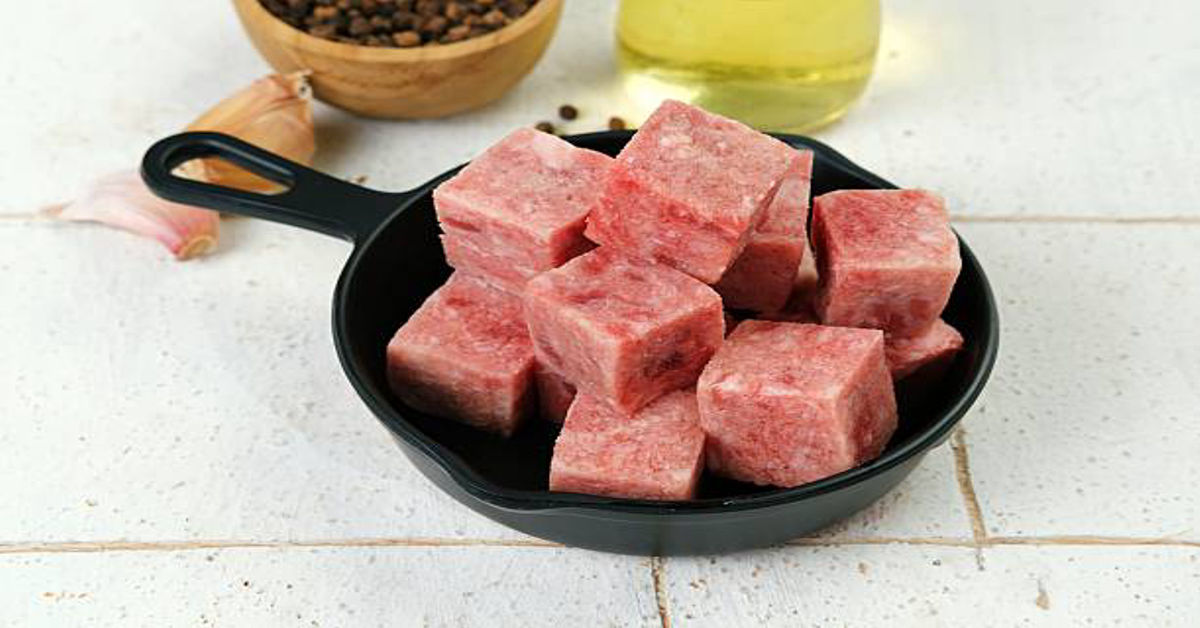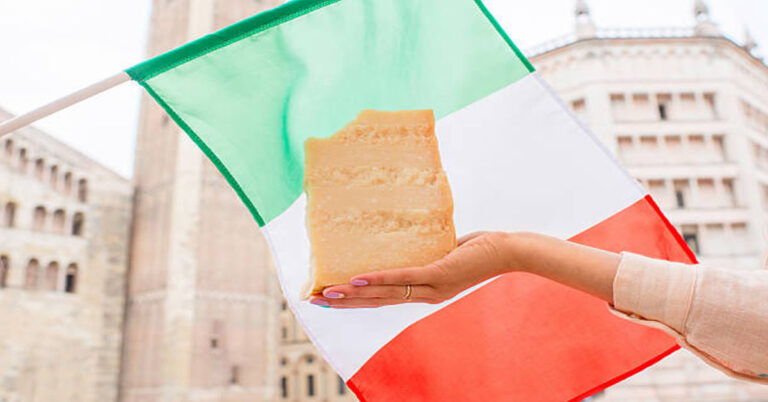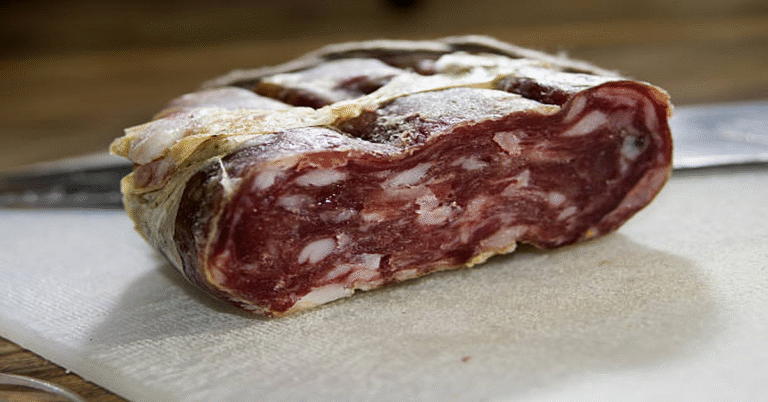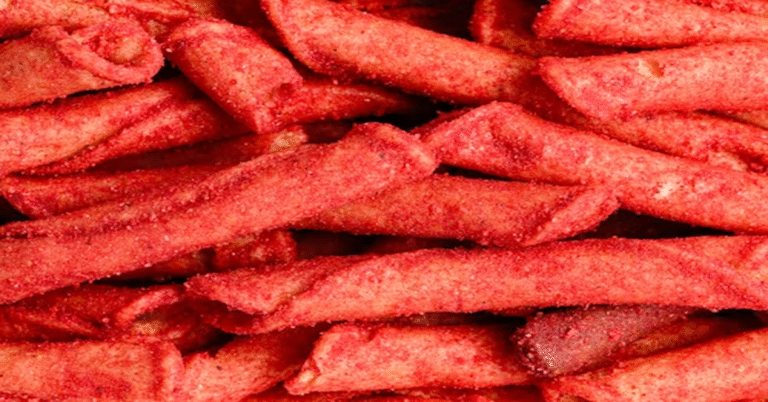Wagyu Beef Tallow: The Golden Essence of Gourmet Cooking
In the evolving world of culinary artistry, certain ingredients stand above others not for their novelty but for their unmatched quality and character. Among such treasures is Wagyu Beef Tallow—a richly flavorful, golden fat rendered from the prized Wagyu cattle of Japan. It’s not merely cooking oil or grease; it’s a culinary gem revered for its purity, nutritional properties, and the luxurious depth it adds to food.
For centuries, animal fats have played an essential role in human diets and traditional cooking. Yet in the modern age of plant-based oils and processed shortenings, natural fats like beef tallow have sometimes been misunderstood or neglected. However, with the resurgence of interest in authentic cooking methods, nutrient-dense ingredients, and sustainable meat products, Wagyu Beef Tallow has reclaimed its rightful place as a symbol of flavor, nutrition, and craftsmanship.
1. Understanding What Wagyu Beef Tallow Is
Wagyu Beef Tallow is a purified fat rendered from the meat and fatty tissues of Wagyu cattle, a breed known for its extraordinary marbling and tenderness. The word “tallow” refers to rendered fat from ruminant animals like cows or sheep. However, what sets Wagyu tallow apart from ordinary beef tallow is the exceptional fat composition and distinct aroma derived from the genetic makeup of Wagyu cattle.
Wagyu cattle are raised under meticulously controlled conditions in Japan (and now globally), where they are fed a specialized diet rich in grains and allowed to mature slowly. This lifestyle results in highly marbled meat—a network of fine intramuscular fat that melts at a low temperature, giving the meat its famous buttery texture. When rendered, this same fat becomes Wagyu tallow, a translucent, golden oil that solidifies into a soft, creamy substance at room temperature.
Unlike ordinary beef fat, which can be waxy or hard, Wagyu tallow remains smooth, clean, and lightly aromatic, with a flavor reminiscent of roasted nuts and sweet cream.
2. Historical Background and Cultural Significance
Historically, animal fats such as tallow were the cornerstone of cooking before vegetable oils became widespread in the 20th century. In Japan, Wagyu cattle were originally bred as working animals, prized for endurance and strength. Their meat and fat were consumed rarely and with reverence, often reserved for special occasions.
As Wagyu beef began gaining global fame in the late 20th century, chefs discovered that the rendered tallow carried not only the nutritional richness but also the distinct umami signature of Wagyu. Japanese culinary philosophy emphasizes balance, purity, and respect for ingredients, and Wagyu tallow became an embodiment of those values—natural, minimal, and profoundly flavorful.
Today, Wagyu tallow is celebrated not only in Japan but in high-end kitchens across the world, where it is used for deep frying, roasting, searing, and even as a finishing oil for luxurious flavor enhancement.
3. Composition and Nutritional Profile
Wagyu beef tallow differs from standard beef tallow primarily in fat composition, particularly the ratio of saturated to unsaturated fats and the types of fatty acids it contains.
| Component | Typical Percentage | Function / Benefit |
|---|---|---|
| Monounsaturated Fats (Oleic Acid) | 50–60% | Promotes heart health, similar to olive oil |
| Saturated Fats | 30–40% | Provides stability for cooking, flavor depth |
| Polyunsaturated Fats | 5–10% | Essential fatty acids for metabolism |
| Omega-3 & Omega-6 Balance | Optimal | Anti-inflammatory benefits |
| Conjugated Linoleic Acid (CLA) | Trace | Supports metabolism and immune function |
| Vitamins A, D, E, K2 | Minor | Fat-soluble nutrients for cell and bone health |
This composition makes Wagyu tallow nutritionally superior to many industrial fats. Its high monounsaturated fat content—particularly oleic acid—is similar to that of olive oil, making it a stable yet heart-friendly cooking fat. Moreover, because Wagyu tallow has a high smoke point (around 400°F / 204°C), it can be used safely for frying without producing harmful oxidation compounds.
4. Rendering Process: How Wagyu Tallow Is Made
Rendering refers to the process of slowly heating raw fat to separate pure oil from connective tissues, water, and impurities. Proper rendering ensures that the tallow retains its clean flavor and golden color.
Steps in Rendering Wagyu Beef Tallow:
- Selection of Fat:
The finest fat trimmings are chosen from Wagyu cuts such as brisket, ribeye, and sirloin. These sections have dense marbling and a delicate fat structure. - Preparation:
Fat is cut into small cubes to maximize surface area, ensuring even melting during the rendering process. - Slow Heating:
The fat is gently heated in a heavy pot or slow cooker at low temperature (around 90–100°C / 200–212°F). This gradual heating prevents burning and preserves nutrients. - Separation:
As the fat melts, solid residues (cracklings) sink to the bottom, leaving clear golden oil above. - Straining and Cooling:
The liquid fat is strained through fine cloth or mesh, then cooled until it solidifies into a creamy, opaque tallow. - Storage:
Once cooled, Wagyu tallow can be stored in airtight jars. It remains stable for months without refrigeration due to its low moisture content.
The result is a pure, fragrant, shelf-stable fat with unparalleled smoothness and clarity—an ingredient revered by chefs for its versatility and depth.
5. Flavor Profile and Culinary Properties
Wagyu tallow’s appeal extends beyond nutrition—it’s the taste and texture that make it so prized. When used in cooking, it imparts a silky mouthfeel and a subtle umami-rich aroma that enhances the natural flavors of food rather than overpowering them.
Compared to ordinary beef tallow, Wagyu tallow is lighter, less greasy, and far more refined. The flavor profile can be described as a harmonious blend of:
- Buttery smoothness with a sweet undertone
- Nutty warmth similar to roasted hazelnuts
- Savory depth that amplifies meat and vegetables
- Clean finish without residual heaviness
The combination of low melting point and high smoke point gives it exceptional performance in professional kitchens. Foods fried or seared in Wagyu tallow develop a crisp, golden crust while staying tender inside.
6. Culinary Applications of Wagyu Beef Tallow
6.1 Frying and Searing
Perhaps the most common use of Wagyu tallow is for frying and searing meats, potatoes, or pastries. The high smoke point ensures stability, while its flavor adds subtle richness to fried foods.
Chefs often replace vegetable oil or butter with Wagyu tallow to achieve superior texture and moisture retention.
| Application | Advantage | Example Dish |
|---|---|---|
| Deep Frying | Crisp texture, no greasy residue | French fries, tempura |
| Searing Meat | Rich crust formation | Steak, lamb chops |
| Pan Roasting | Enhanced flavor depth | Chicken thighs, root vegetables |
| Stir-Frying | Aromatic base for sauces | Asian beef stir-fry |
6.2 Baking and Pastry Making
Wagyu tallow can be used as a substitute for butter or shortening in baked goods. Its smooth texture gives pastries flakiness and a rich, savory aroma. Bakers use it in pie crusts, biscuits, and savory tarts for an indulgent twist.
6.3 Seasoning and Finishing
When melted slightly, Wagyu tallow can be brushed over steaks, vegetables, or bread as a finishing fat, enhancing aroma and gloss. A small drizzle can elevate the umami of soups, stews, or ramen.
6.4 Homemade Cooking and Keto Diets
For those following low-carb or ketogenic diets, Wagyu tallow serves as a pure fat source free from trans fats or additives. It supports satiety and energy metabolism while remaining natural and nutrient-dense.
7. Health Benefits of Wagyu Beef Tallow
Despite the long-standing misconception that animal fats are unhealthy, recent nutritional studies have recognized the benefits of naturally rendered fats, particularly those rich in monounsaturated and conjugated linoleic acids.
Key Health Benefits:
- Heart Health Support:
The high concentration of oleic acid—the same beneficial fat found in olive oil—helps reduce LDL cholesterol while supporting HDL levels. - Hormonal Balance:
Dietary fats are essential for hormone synthesis, and the natural saturated fats in Wagyu tallow provide building blocks for hormone regulation. - Nutrient Absorption:
Vitamins A, D, E, and K2, which are fat-soluble, require dietary fats for absorption. Using tallow enhances nutrient uptake from vegetables and grains. - Stable Energy Source:
Tallow provides long-lasting energy without causing insulin spikes, making it ideal for athletes or ketogenic diets. - Anti-inflammatory Properties:
The presence of CLA and omega fatty acids helps reduce inflammation, improving joint and cellular health. - Cognitive Function:
Healthy fats contribute to brain performance, memory retention, and mood regulation.
Wagyu tallow, being unprocessed and naturally refined, offers these benefits without the drawbacks of artificial trans fats found in hydrogenated oils.
8. Comparison: Wagyu Tallow vs. Other Cooking Fats
| Feature | Wagyu Beef Tallow | Butter | Olive Oil | Vegetable Shortening |
|---|---|---|---|---|
| Smoke Point | 400°F (204°C) | 350°F | 375°F | 325°F |
| Main Fat Type | Monounsaturated | Saturated | Monounsaturated | Trans fats (in some) |
| Flavor | Rich, savory, clean | Creamy, dairy-like | Fruity, light | Neutral |
| Shelf Stability | High | Medium | Low (oxidizes) | High |
| Nutrient Content | Vitamins A, D, E, K2 | Vitamin A | Polyphenols | Minimal |
| Best For | Frying, roasting, searing | Baking, sautéing | Salad dressing | Baking |
Wagyu tallow uniquely combines heat stability, nutrition, and exquisite taste, making it one of the few fats that perform well both in home kitchens and professional establishments.
9. Sustainability and Ethical Production
Sustainability is an increasingly important concern in modern gastronomy. Wagyu beef tallow aligns well with this movement because it reduces waste and maximizes use of the entire animal. By rendering fat that might otherwise be discarded, producers ensure that every part of the Wagyu cow is valued.
Furthermore, Wagyu cattle are generally raised under ethical, low-stress conditions. Farmers prioritize animal welfare, balanced feeding, and minimal antibiotics, resulting in healthier livestock and better fat composition. Many Wagyu farms practice closed-cycle breeding systems that emphasize sustainability and land conservation.
By choosing Wagyu tallow, chefs and consumers support a food system grounded in respect for animals, resource efficiency, and natural quality.
10. Storage and Handling of Wagyu Tallow
Proper storage ensures that Wagyu tallow retains its signature flavor and clarity for extended periods.
- Room Temperature Storage:
When sealed in airtight jars and kept away from sunlight, it can last for up to 6 months. - Refrigeration:
Extends shelf life to 12 months. Before use, allow it to soften slightly for easy scooping. - Freezing:
For long-term storage, Wagyu tallow can be frozen without losing flavor. Simply melt and strain again after thawing to maintain texture.
Tip: Always use clean utensils to avoid contamination, and never introduce water into the jar as it can lead to spoilage.
11. Non-Culinary Uses of Wagyu Beef Tallow
Beyond the kitchen, Wagyu beef tallow has applications in skincare, candle-making, and natural product formulations. Its fatty acid composition closely resembles human sebum, making it an excellent moisturizer.
Common Non-Culinary Uses:
| Use | Description |
|---|---|
| Skincare Balm | Softens dry skin, heals minor irritations |
| Soap Making | Produces creamy, long-lasting lather |
| Candles | Burns cleanly, emits a subtle aroma |
| Leather Conditioning | Protects and restores natural leather oils |
| Metal Lubrication | Used in traditional tools and instruments |
These uses highlight the versatility and sustainability of Wagyu tallow, bridging traditional craftsmanship and modern lifestyle needs.
12. How to Use Wagyu Tallow at Home
Even home cooks can enjoy the benefits of Wagyu tallow. A few simple methods can transform ordinary dishes into restaurant-quality experiences.
- For Fried Potatoes:
Heat tallow to 350°F, fry thick-cut potatoes until golden. The result is crisp yet fluffy fries with a deep savory flavor. - For Steak Finishing:
Melt a spoonful of Wagyu tallow and drizzle over grilled steak. The heat will release its aroma, enhancing the meat’s natural juices. - For Roasted Vegetables:
Toss vegetables in melted tallow instead of oil. It creates caramelized edges and earthy richness. - For Baking:
Replace butter or shortening with tallow in pie crusts for flakier texture and subtle umami flavor. - For Popcorn:
Pop corn kernels in Wagyu tallow for a gourmet twist—nutty, buttery, and utterly indulgent.
13. The Science Behind the Flavor
The unique flavor of Wagyu tallow can be attributed to its fatty acid structure and low melting point. When heated, Wagyu fat releases volatile aromatic compounds that create a savory, buttery scent similar to roasted almonds.
These compounds interact with amino acids and sugars in foods through the Maillard reaction, producing deep golden browning and complex flavors. In essence, Wagyu tallow amplifies umami by binding flavor molecules, ensuring every bite feels more intense and satisfying.
14. The Culinary Renaissance of Animal Fats
In the past, natural fats like tallow were replaced by vegetable shortenings and hydrogenated oils. However, nutrition science has debunked many myths about animal fats. Chefs now appreciate that quality and processing methods matter more than the fat’s origin.
Wagyu tallow represents a return to traditional culinary wisdom, where natural fats are valued for their taste, health benefits, and sustainability. The rise of farm-to-table restaurants and nose-to-tail butchery has further cemented its comeback.
15. Economic Value and Accessibility
While Wagyu beef itself is considered a luxury, Wagyu tallow provides an affordable way to experience its essence. Because rendering utilizes trimmings, it often costs significantly less than premium Wagyu cuts. This accessibility allows everyday cooks and small restaurants to infuse dishes with Wagyu flavor without the high price tag.
16. Future Prospects and Culinary Innovation
With growing interest in clean eating, keto lifestyles, and regenerative agriculture, Wagyu tallow is poised for increased popularity. Future innovations may include:
- Infused Wagyu tallow with herbs or spices
- Ready-to-use Wagyu frying blends
- Skincare products using premium tallow bases
- Gourmet packaged tallow for retail and export
Such developments signify the merging of tradition and modernity—a culinary evolution inspired by respect for the past.
17. Conclusion
Wagyu Beef Tallow is far more than rendered fat—it’s the essence of luxury distilled into a golden elixir. It embodies a philosophy of cooking that values purity, respect for ingredients, and a deep appreciation of nature’s gifts. From its nutritional excellence to its unmatched flavor and versatility, Wagyu tallow stands as a reminder that the simplest things, when treated with care, can yield the richest rewards.
Whether used for frying, roasting, skincare, or candle-making, Wagyu Beef Tallow continues to captivate chefs and enthusiasts alike, linking ancestral wisdom with modern gastronomy in one remarkable ingredient.
FAQs About Wagyu Beef Tallow
1. What is Wagyu Beef Tallow?
Wagyu Beef Tallow is pure rendered fat obtained from Wagyu cattle. It is prized for its rich flavor, smooth texture, and high monounsaturated fat content.
2. How is Wagyu Tallow different from regular beef tallow?
Wagyu tallow contains more oleic acid, giving it a lower melting point, creamier texture, and cleaner flavor compared to ordinary beef tallow.
3. Is Wagyu Beef Tallow healthy?
Yes. It is rich in monounsaturated fats, vitamins, and CLA, making it a heart-friendly, nutrient-dense natural cooking fat.
4. Can Wagyu tallow be used for frying and baking?
Absolutely. Its high smoke point and stable structure make it ideal for frying, roasting, and even baking savory pastries.
5. How should Wagyu tallow be stored?
Keep it in an airtight container away from sunlight. It remains fresh for months at room temperature and up to a year refrigerated.







